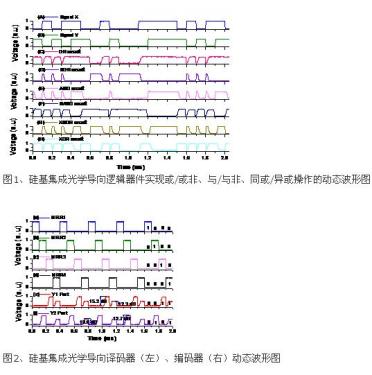 Since American scientist Hardy and Israeli scientist Shamir jointly proposed the concept of optical guiding logic in 2007, the optical guiding logic has attracted widespread attention. Currently, there are many US naval laboratories, Rice University, Fiske University, and Israeli Polytechnic Institute. Home research institutions engage in relevant research.
Since American scientist Hardy and Israeli scientist Shamir jointly proposed the concept of optical guiding logic in 2007, the optical guiding logic has attracted widespread attention. Currently, there are many US naval laboratories, Rice University, Fiske University, and Israeli Polytechnic Institute. Home research institutions engage in relevant research.
Different from the traditional optical logic, the realization of the optical guide logic depends on the optical switch network. Each switch unit is relatively independent, and its state change does not depend on other units; moreover, the calculation result of the previous unit passes through the speed of light to the next-level unit. The delay of information transmission is almost negligible, and the circuit formed by the optical guide logic device can complete all logic operations instantaneously, and the calculation speed is greatly accelerated. Compared with traditional optical logic devices, optical guide logic devices do not need to use optical nonlinear effects, and therefore do not need strong light, and are easy to implement device cascade to form a complex logic circuit. Due to its inherent high-speed and low-loss characteristics, optical guided logic devices are expected to find applications in radar, sonar signal processing, and other fields that require high computational speeds.
Researchers of the Photovoltaic Systems Laboratory of the Institute of Semiconductors, Chinese Academy of Sciences, proposed an XOR or XOR logic device based on the principle of optical guiding logic in 2009, and took the lead in realizing the principle verification of the device in 2010 (Optics Letters, 35 (2010). 1620-1622), Optics express, 19 (2010) 6524-6540). Subsequently, the researchers continued their efforts to propose and implement non-, and/or non-, or/and non-optically oriented logic (Optics Letters, 36 (2011) 1650-1652) and Optical decoders (Optics Letters, 36 (2011)). 3314-3316), Principle verification of optical encoders (Optics Letters, Vol. 36, No. 19, 2011). The above series of work is the main experimental research result of optical guiding logic so far.
At present, researchers are working to improve the speed of devices and the functional integration of devices.